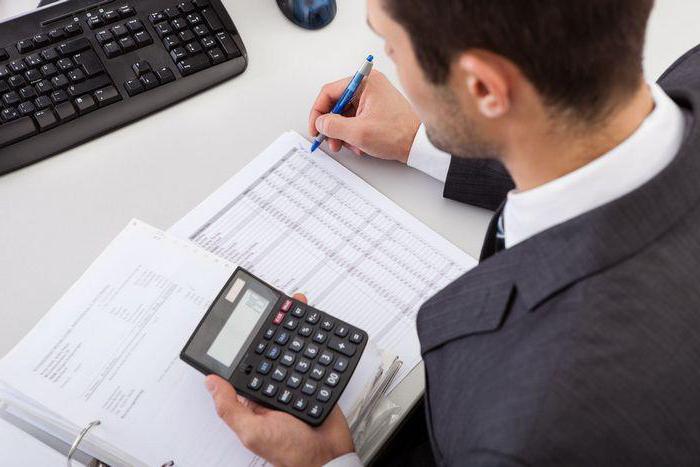Depreciation in accounting is the process of transferring the cost of fixed assets and intangible assets in parts to the price of products (work performed, services rendered) as they become morally and physically depreciated. The calculation of contributions can be carried out by different methods. They are defined in PBU 6/01.
Terminology
Depreciation is the deduction of part of the cost of fixed assets to compensate for depreciation of objects. They are included in the costs of circulation or production. Deductions are made on the basis of established norms, as well as the carrying value of funds, on which, in fact, depreciation is charged. The norm is the annual% compensation for the price of the worn-out part of the OS.
Methods
In accordance with domestic accounting standards, 4 calculation options are provided:
- Linear way. It involves a uniform distribution of the amount from the initial to the final cost (at the end of the operational period) throughout the entire period of service of the asset. The current residual value is determined by subtracting the total accumulated depreciation of the property from the original.
- Write-off of the value in proportion to the volume of output (services rendered, works performed). The calculation is based on a physical indicator (for example, the machine-hour of equipment operation).
- The method of reduced residue. The amount for each period is equal to the final cost multiplied by a certain percentage. Depreciation is charged annually at the beginning of the period.
- Write-off of the amount of the number of years of the service life.

In accordance with the law, enterprises can independently choose the method of accounting for depreciation. The simplest is the linear method. However, for many organizations, the use of a reduced residue method is more beneficial. It refers to non-linear accounting methods. Consider further what constitutes a reduced residue method. An example of the application of this method will also be described in the article.
Description
In the non-linear method, the repayment of the property value is carried out unevenly throughout the entire operational period. Depreciation using the reduced balance method involves the use of an acceleration coefficient. The company can install it within 1-2.5. Moreover, for leased property, the coefficient can be tripled. In practice, this means that the company reimburses most of the costs of purchasing objects while they are still relatively new.
Expediency
In what cases are such depreciation deductions beneficial ? The method of reduced residue is most appropriate when the objects annually significantly lose in their productivity. Having worked out a certain resource, property requires an ever-increasing cost of maintenance and repair. Its effectiveness is significantly reduced, despite the fact that the service life has not yet formally expired.
In other words, the benefits of operating such property begin to decline. In the interests of the owner to write off the acquisition as soon as possible. So he will have the opportunity to renew the OS from the depreciation fund.
Exceptions
It should be said that the method of reducing the balance of depreciation is not applicable in all cases. This method does not fit:
- Unique equipment for individual types of production.
- Objects with a useful life of less than 3 years. They include machinery and equipment from 1-3 depreciation groups.
- Cars. The exception is official cars and taxis.
- Office environment.
- Buildings and some other objects assigned to the 8-10th groups by useful life.
Features of the calculation
The basis of the calculations is the residual value of the property. It is equal to the initial costs of its purchase and commissioning, from which the repaid amounts at the beginning of the period are deducted. Another indicator that will be required in the calculation is the depreciation rate. It is determined by the period of useful operation. The wear factor is defined as 100% / n. Here n is the service life in months or in years (depending on the time period for which the calculation is made). The third indicator that is used in the formula is the acceleration coefficient. It is established by the enterprise independently and is fixed in financial policy.
The reduced residue method, therefore, involves the following equation:
A = Co * (K * Ku) / 100, in which:
- write-off amount - A;
- residual st-st - Co;
- wear rate - K;
- acceleration coefficient - Ku.
Practical use
Consider how the method of reduced residue. The initial data are as follows:
- 50 thousand rubles - the amount to purchase the OS;
- 5 years - the period of useful operation;
- acceleration coefficient - 2.
The calculation can be carried out by two methods. In the first case, the period of service is converted to months immediately. In the second - the annual amount is calculated, and then divided by 12. To calculate, you will need one and the other numbers. The fact is that depreciation is carried out every month, and to determine the residual value you need an annual amount. First of all, the norm is calculated. It is 20% / year (100% / 5 years) or 1.67% / month. (100% / 60 or 20% / 12). Taking into account Ku = 2, the wear rate for the year is 40%, and for the month - 3.34%.
Using the method of reduced balance, the calculation can be carried out for each 12 months separately:
- In the first year, the sought value is equal to the original. The amount of write-off: 50 thousand rubles x 40/100 = 20 000 or 1670 p / month.
- In the second year, accrual begins with the determination of the residual value. It will be 50,000 - 20,000 = 30,000 rubles. Further, using the formula, we get: 30,000 x 40/100 = 120,000 or 1,000 r / month.
- For the third year, the calculation is carried out in a similar way. The result is 7200 r / year or 600 r / month.
- In January of the next (fourth) year, the balance of the initial costs for the purchase of fixed assets is 10 800 p. Substituting the values in the formula, we get the amount of 4320 r / year or 360 r / month.
- At the beginning of the last year, the cost is 10800 - 4320 = 6480 p. The resulting figure is 13% of the OS price, taken into account when setting the object on the balance sheet. At this stage of the calculation, you should turn to tax standards. In accordance with Article 259 of the Tax Code, when the book value of 20% of the initial value is reached, the calculation method changes. In order to maintain the monthly repayment schedule for deductions and write off the property expenses incurred in full, the balance should be distributed according to the number of months until the end of operation. Thus, 6480 is divided into 12 months. The result is the amount of depreciation per month for the last year of operation - 540 rubles.

Conclusion
Throughout the entire operational period, the book value of the property is reduced by the depreciation amount. This will continue until it reaches zero. Here it is necessary to note one important point: if the company chooses the method of reducing the balance, it should be applied throughout the entire operational period. It is valid from the date of capitalization until the calculation of depreciation. The basis for the termination of depreciation is the full repayment of the price of the property or its removal from the balance sheet. It should not be forgotten that the method chosen by the enterprise must be necessarily enshrined in financial policy.